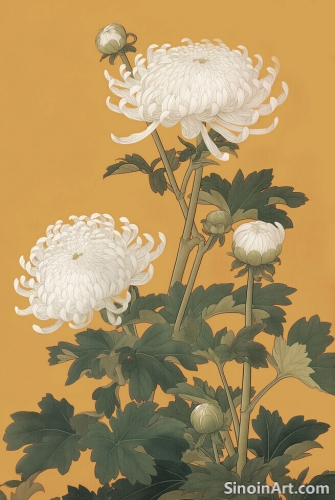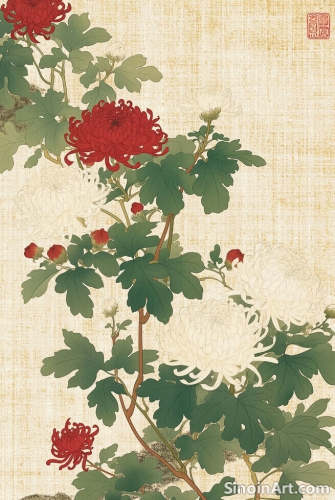Gongbi Painting and its Place in Contemporary Art Discourse
|
While deeply rooted in tradition, Gongbi painting holds a relevant place in contemporary art discourse. Contemporary artists are engaging with the art form in innovative ways, both honoring its historical legacy and challenging its boundaries. The art form is both rooted in history and expanding its reach in contemporary practice.  Contemporary artists are using Gongbi techniques to explore a wide range of subject matter, from personal narratives to social commentary, challenging the notion that the art form is limited to traditional themes. The artists are expanding the language of the art form by incorporating new styles and subject matter.  Gongbi painting also offers a perspective on the relationship between tradition and modernity, showcasing how artists can engage with the past while also addressing contemporary concerns. The work bridges both the past and present, creating a dialogue between old and new.  The meticulous detail and technical skill required for Gongbi painting also offer a counterpoint to the more conceptual or abstract approaches that are often seen in contemporary art. The focus on skill and craftsmanship is a valuable aspect in the modern artistic conversation. The global reach of contemporary art allows Gongbi painting to be seen by a broader audience and engage in new dialogues with artists from around the world. The integration of the tradition in the modern discourse expands its influence and scope. Gongbi painting has a valuable contribution to make to contemporary art discourse, offering a unique perspective on tradition, technique, and the relationship between the past and the present. The art form is both an expression of traditional culture and a tool for contemporary artistic expression. |
Tag : Gongbi contemporary, modern art, tradition vs modernity, Chinese art dialogue, art discourse
Related information
- Gongbi and the Representation of Textiles and Patterns
- Gongbi Painting and the Depiction of Clouds and Mist
- Gongbi Painting and the Depiction of Historical Events
- Gongbi and the Depiction of Everyday Life
- Gongbi Painting and the Concept of "Qi Yun Sheng Dong"
This article explores the meticulous representation of textiles and patterns in Gongbi painting, highlighting the detailed linework, color variations, and how these elements convey texture, volume, and contribute to the overall narrative of the artwork.
This article explores the depiction of clouds and mist in Gongbi painting, highlighting the techniques used to create a sense of depth, luminosity, and atmosphere, and how the subtle variations in color and tone evoke a sense of mystery and serenity.
This article explores the role of Gongbi painting in documenting and interpreting historical events, highlighting its meticulous detail, portrayal of figures, use of color, and how these works act as both visual records and cultural perspectives on the past.
This article explores the use of Gongbi painting in depicting scenes from everyday life, highlighting its meticulous detail, portrayal of common activities, and how these works serve as visual records of daily existence and a particular time and place.
This article explores the significance of “Qi Yun Sheng Dong” (spirit resonance and lifelike movement) in Gongbi painting, highlighting the artist’s pursuit of capturing the essence and vital energy of the subject matter beyond mere visual representation.